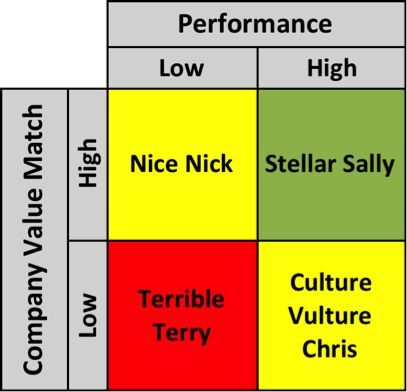The Culture Vulture – Every Organization’s Number One Internal Enemy That They Do Nothing About.

Check out the original publication on LinkedIn.
As a leader, have you ever said or thought something like the following:
“John is our top sales person and has the relationship with our top clients – even though we know he can be negative we can’t let him go – we would lose too much business.”
“Chris has been here forever and all of our critical processes are in her head. She knows how do to everything. I love 80% of what she does but the 20% she does behind the scenes drives everyone crazy. I would move her out but our business would be at risk. Once I get some processes documented and someone else trained I’ll make a change.”
John and Chris are Culture Vultures. They are incredibly good at their jobs – in fact, you might be hard pressed to find someone who could do their job better. But, they don’t fit your culture. Just like a vulture they eat away at your culture slowly over time until nothing is left. Culture Vultures don’t match your company values (hopefully you have them defined). They chip away at your culture in ways you can’t even imagine. In fact, you probably are aware of some but not all of the culture-sabotaging things they do, but you feel trapped because you perceive you need them for “today”. So what do you do about Culture Vultures?
Before we answer that, let’s look at the four culture types based off two essential variables; job performance and value alignment:

- Stellar Sally is THE perfect employee – damn good at what she does and fully matches your organization’s values.
- Nice Nick is a great person – he matches your company values perfectly but currently he’s in a role that where he can’t perform at a high level (it doesn’t match his capabilities).
- Terrible Terry is, well, terrible. Not a match with your values and a poor performer. Pretty easy to figure you what you need to do here.
- And then there is Culture Vulture Chris – Really, really, really good at what she does, but doesn’t match your values.
So what do you do with each of these employee types?
- Stellar Sally – hang on to her for dear life. Employees like Sally are in top segment of your employee bell curve – top performers that fit your culture like a glove. Keep them, celebrate them and encourage their efforts.
- Nice Nick – find a position or create a position where he can do well and add value to the organization. If you can’t find a position where he can do well, you are faced with a tough dilemma. As a for profit company you can’t really keep him just because he fits your culture. If you keep low performers, others will realize they don’t have to work as hard. The thinking is “if Nick is still here and he is not good at his job, then I am fine doing the bare minimum”. You will have to let him go if you can’t find a spot. Tough decision, but long-term the right decision for your organization, and ultimately Nick (he will be happier when he is in a job that matches his talents).
- Terrible Terry – move him out. Today.
- Culture Vulture Chris – you have to move her out ASAP. The worst thing you can do is keep top performers who violate your values. Even just one person can kill your culture, and all other employees see this. Your organization is underperforming with Chris there, and in fact you will lose good employees if you keep Chris around. Get involved with your clients and your employees – you will survive the storm. In fact, you will be pleasantly surprised how favorably the organization will respond, and they will jump through hoops to help you fill the gap left by letting Chris go. Your company will be better than ever before.
As leaders, we have all made the mistake of waiting too long to address culture vultures. I personally have waited too long more times than I care to count. And, after I finally did make each change, I always wondered what took me so long. Make a commitment going forward to take action, and do it soon. The company will be stronger and everyone will be happier. And as we all know, happy people lead to better results, which leads to happier people, which leads to better results, and so on and so on.